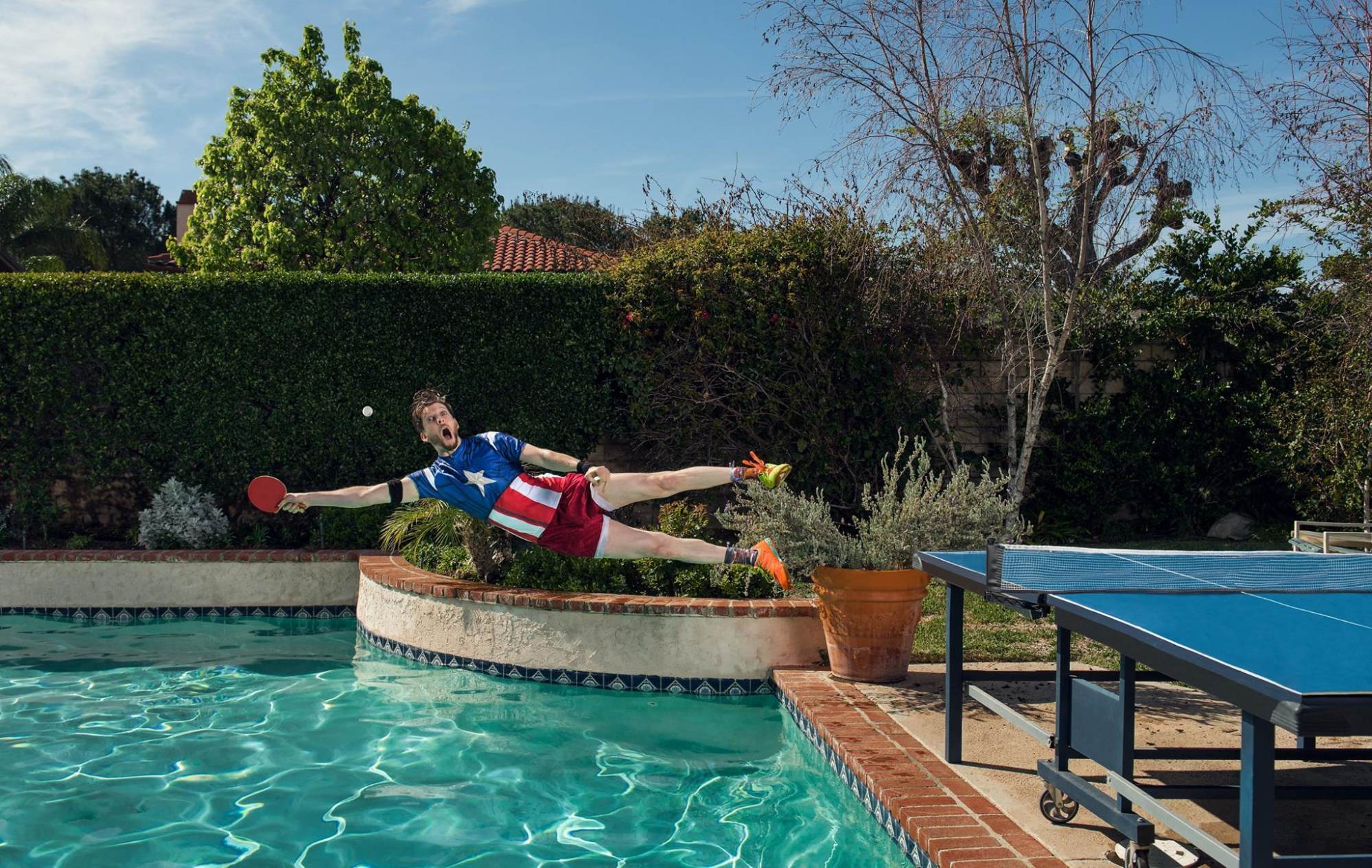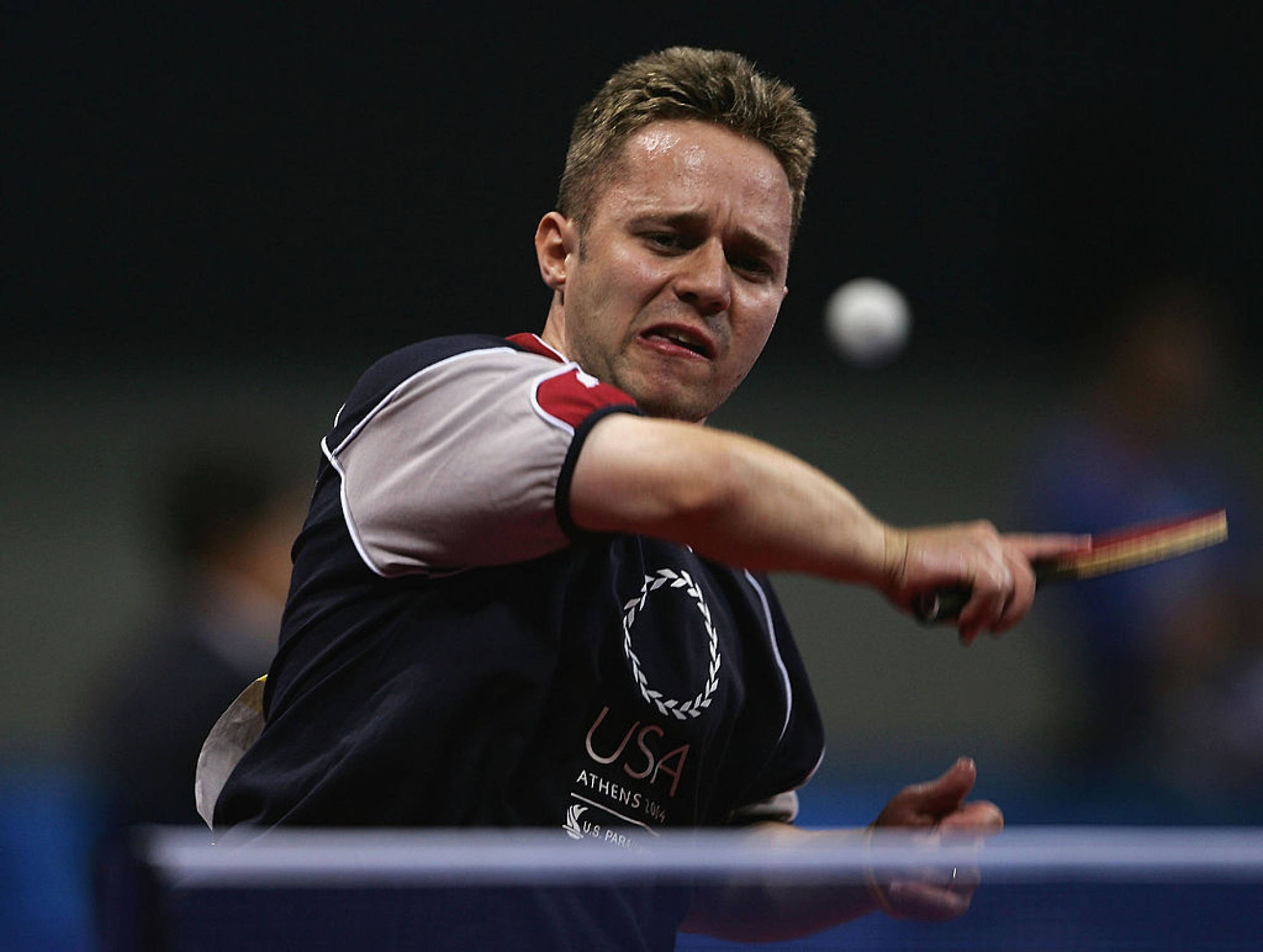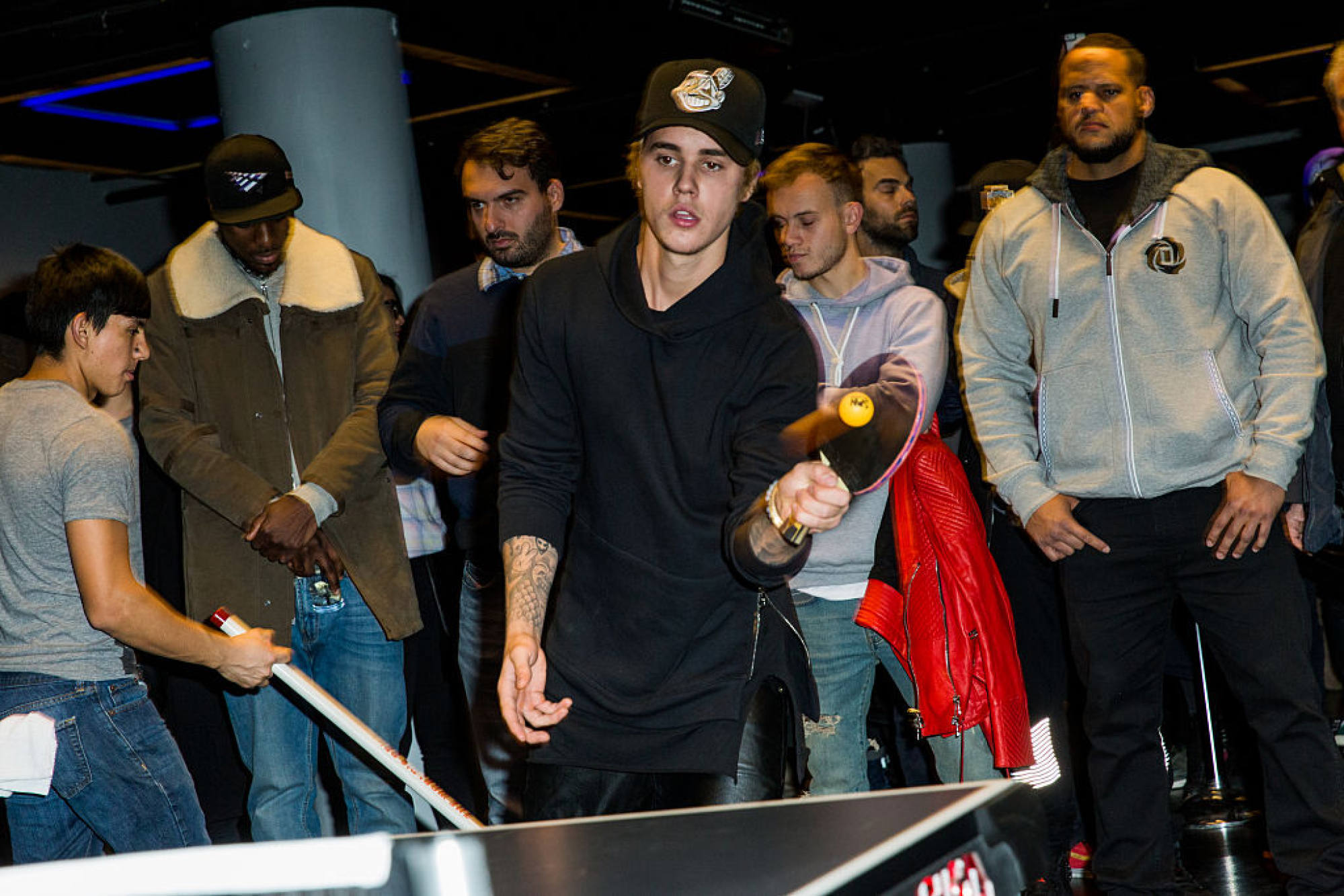
- Table tennis is just a bit of fun for most Americans, but Adam Bobrow, whose commentary at the 2020 Olympics attracted a new breed of fan, could change that
As the table tennis final unfolded during the 2020 Summer Olympics at the Tokyo Metropolitan Gymnasium, Chinese athletes Ma Long and Fan Zhendong, the two biggest names in the sport, faced off for the gold medal.
Those tuning in to the English commentary were treated to another star of the game, American Adam Bobrow, who with equal parts knowledge and pizazz, has helped the sport reach new, Western audiences.
“Fan Zhendong has shown up to the party,” quipped Bobrow, after the Chinese star lost a number of points in the first set. “Fashionably dressed and fashionably late but it is a best of seven and we’ve seen it before, so many back and forths where someone dominates, and then the next game gets dominated.”
The former actor, with his splashy shirts and infectious personality, has injected the sport with some much needed colour. Bobrow’s chatty commentary, which includes Americana one-liners you might hear on a car racing show or a comedy set, has become the stuff of legend since he officially took the position, winning a contest in 2014 to be – get this – the official commentator for the International Table Tennis Federation (ITTF).
Hong Kong Olympic hero Minnie Soo swaps table tennis for university
“It’s crazy to think that between all of the sports I grew up playing, the one that I played with my dad on the driveway for fun would become my profession,” says Bobrow, a California native who now calls Taiwan home, “and that it would eventually take me around the world.”
A player of some repute himself, Bobrow’s YouTube channel has 749,000 subscribers and his video called “A Year of Ping Pong” is closing in on 20 million views. Travelling the world playing against both regular folk and professionals, and dazzling audiences with trick shots and colourful outfits, Bobrow – who speaks conversational Mandarin – stands out in a sport that has, up until now, lacked showmanship.

In the United States, the sport is still known by the colloquial, hobbyist term of “ping-pong”, which was trademarked by the Parker Brothers toy company. According to the Sport & Art Educational Foundation, a US non-profit organisation that offers table tennis therapy for the elderly and disabled children, the game is now the third-fastest growing pastime in the US.
Sales of table tennis sets are on the rise, and among the big names who have been seen playing are Barack Obama, Floyd Mayweather and Justin Bieber. The sport is highly accessible, easy to learn, and relatively cheap to play. But the question remains: can table tennis, a sport dominated by Chinese superstars who are virtually unknown outside their home country, conquer America?
I can’t tell you how many comments I get from people saying, ‘I used to play lots of table tennis growing up and your videos are getting me back into the sport’Adam Bobrow, official commentator, International Table Tennis Federation
Today, the Chinese still dominate the sport. A look at the ITTF’s international rankings shows half of the top 10 men are from mainland China, as are four of the top 10 women, including the top three. But there have been a fair number of outsiders who have made a dent recently. One to watch out for is Kanak Jha, a 21-year-old American of Indian descent, who is currently the third-ranked US men’s player.
Bobrow says Jha is just the tip of the iceberg, and that there are multiple signs table tennis is ready to take off in the US. For the first time since the World Table Tennis Championships were founded, in 1926, the US hosted the event in 2021.
Jha is joined by Lily Zhang, a 25-year-old Californian of Chinese descent who is already a three-time Olympian and five-time US national champion. America’s multicultural roots appear to be playing into the game, along with the fact that the sport is giving youngsters an alternative to traditional pastimes such as American football, soccer and rugby, sports that tend to favour bigger, stronger physiques rather than speed, agility and hand-eye coordination.

“Table tennis is great for kids who find soccer and other team sports too intense or physically challenging,” says Dora Kurimay, chair of USA Table Tennis (USATT) Diversity, Inclusion and Equity Committee.
The Hungarian-born former top-ranked player is now an author and mental performance coach who uses table tennis for a wide array of psychological practices.
“It is a non-traditional, non-contact sport and it’s also an individual sport,” she says. “Table tennis is very accessible, and it develops quick reflexes, speed, strength, and it’s a great sport for mental fitness as well.”

Kurimay says part of the allure for children and parents alike is the low injury rate compared with, say, football, where some players are forced to retire from the sport while still in their teens due to injuries. Table tennis, on the other hand, can be played well past middle age.
“Researchers point out that playing table tennis has many positive health benefits, such as increasing concentration and alertness, stimulating brain function, keeping the brain sharp, preventing dementia, developing tactical thinking, hand-eye coordination and balancing skills,” says Kurimay. “Table tennis is also recommended for Parkinson’s and Alzheimer’s patients.”
Tahl Leibovitz, a USATT Hall of Fame inductee, has played para table tennis for more than 25 years, beginning at the South Queens Boys and Girls Club in New York. Leibovitz has represented the US internationally for more than 20 years and is training to qualify for his seventh Paralympic Games, which will take place in Paris, in 2024. Leibovitz is also a social worker who works with marginalised groups, and uses table tennis as an aid.
“Table tennis is like running, boxing and playing chess at the same time,” he says. “Most people are not aware that the ball travels up to 100mph, but if you stay with it for a few months, you start to really get an appreciation for the sport.”

On top of all this are the vastly different strategies when it comes to Covid-19. The US has shifted to learning to live with the virus while China’s “dynamic zero Covid-19” strategy has kept it in recurring lockdowns and a state of international isolation. But USATT is not deterred. Its Chinese-American CEO Virginia Sung is yet another example of the sport being able to unite East and West.
Sung, who holds a bachelor of philosophy degree from the State University of New York at Stony Brook, has founded and served as CEO of a number of large-scale businesses in China. She says table tennis’ future will depend on how it can compete in an already saturated American market.
“We have 20-plus million people playing already and if you ask anyone on the street if they know how to play ping-pong, everyone is going to tell you they are good at it,” says Sung, who also competed internationally as a player. “So it’s not really about the popularity of it, it’s about the commercial value of the sport.”

Sung adds that the sport won’t be able to take itself to the next step until it can break into the mainstream media and start attracting major corporate sponsors. “It takes time to change the perception of the sport. It’s really about branding: how are we going to brand table tennis in the country and showcase the culture of the sport and humanise it, and create stars? We don’t have any stars right now.”
Sean O’Neill, who competed for the US in five World Championships and was inducted into the USATT Hall of Fame in 2007, says Bobrow’s verbal showmanship at Tokyo 2020 helped capture a new breed of followers and sends a message that the future may hinge on a global star, who can wow audiences with their game and capture the media’s attention in the process.
Viewers who were initially flipping channels during the 2020 Summer Olympics, many of whom may have never watched a table tennis game in their life, quickly found themselves captivated by a commentator who was relatable and entertaining.

O’Neill says table tennis needs to capitalise on what is actually a substantial number of players and fans.
“More than 20 million Americans already play annually. But the biggest challenge is table tennis isn’t seen as a professional sport like golf or tennis in the US,” says O’Neill, who started playing at the age of eight and represented the US at the 1988 and 1992 Olympics. “It is viewed more as a recreational hobby to play with the family. The Olympics are helping change that view.”
Bobrow says companies such as PingPod – which offers players “pods” to get together and play – could be the future. Each pod is equipped with tables for which reservations are made online. PingPod has three locations in New York, and is looking at opening three more. It also recently secured US$10 million in Series A funding for expansion.
Such developments, along with his lucrative YouTube channel, lead Bobrow to believe table tennis in the US could be the next big thing.
“I can’t tell you how many comments I get from people saying, ‘I used to play lots of table tennis growing up and your videos are getting me back into the sport.’ Or ‘I started playing again after I found your channel.’ I love to help people discover their passions or empower them to do the things that light them up inside.
“Not long after college, between jobs, my girlfriend at the time told me, ‘Adam, you need to stop playing so much ping-pong and get serious about your work.’ I looked her right in the eyes and said, ‘No.’”

